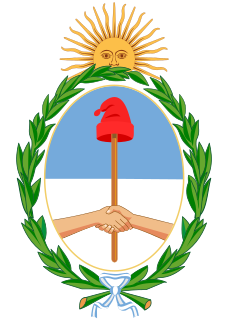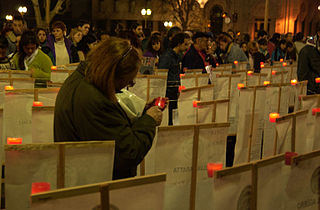 W
WThe Presidency of Néstor Kirchner began on 25 May 2003, when Néstor Kirchner became President of Argentina. He was the Governor of Santa Cruz during the 2003 general election, he was elected second to Carlos Menem but became president when Menem refused to go for a required runoff election. In elections of October 2007, he declined for a second term and was later succeeded by his wife, Cristina Fernández de Kirchner as President.
 W
WArgentina held national parliamentary elections on Sunday, 23 October 2005. For the purpose of these elections, each of the 23 provinces and the Autonomous City of Buenos Aires are considered electoral districts.
 W
WThe Argentine debt restructuring is a process of debt restructuring by Argentina that began on January 14, 2005, and allowed it to resume payment on 76% of the US$82 billion in sovereign bonds that defaulted in 2001 at the depth of the worst economic crisis in the nation's history. A second debt restructuring in 2010 brought the percentage of bonds under some form of repayment to 93%, though ongoing disputes with holdouts remained. Bondholders who participated in the restructuring settled for repayments of around 30% of face value and deferred payment terms, and began to be paid punctually; the value of their nearly worthless bonds also began to rise. The remaining 7% of bondholders were later repaid in full, after centre-right and US-aligned leader Mauricio Macri came to power in 2015.
 W
WArgentina held presidential election on Sunday, 27 April 2003. Turnout was 78.2%. No one presidential candidate gained enough votes to win outright, but the scheduled runoff was cancelled when former president and first-round winner Carlos Menem pulled out, handing the presidency to runner-up, Santa Cruz Province Governor Néstor Kirchner of the Front for Victory. Legislative elections were held on 12 dates, 27 April, 24 August, 31 August, 7 September, 14 September, 28 September, 5 October, 19 October, 26 October, 9 November, 16 November and 23 November.
 W
WThe Buenos Aires–Rosario–Córdoba high-speed railway was a project designed to link the Argentine cities of Buenos Aires, Rosario and Córdoba through a 710 km (440 mi) high-speed rail network. The plan, announced by then-President Néstor Kirchner during a press conference at the Casa Rosada on 26 April 2006, would be the first in Argentina operating at up to 320 km/h (200 mph). The entire project was dismissed due to the financial crisis of 2007–08.
 W
WThe National Archive of Remembrance is an archive set up by decree 1259/2003 of the president of Argentina Néstor Kirchner on 16 December 2003 to obtain and process data pertaining to human rights violations by the Argentine State, obviously referring to events of the illegal dirty war of 1976 to 1983 waged by the state on those it perceived as its enemies.
 W
WThe República Cromañón nightclub fire occurred in Buenos Aires, Argentina on 30 December 2004, killing 194 people and leaving at least 1,492 injured.